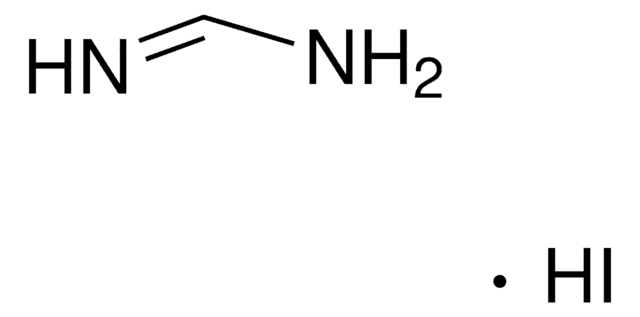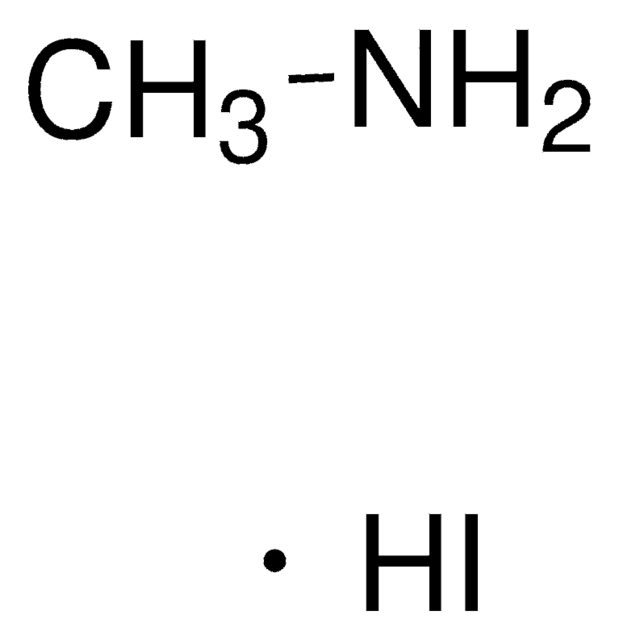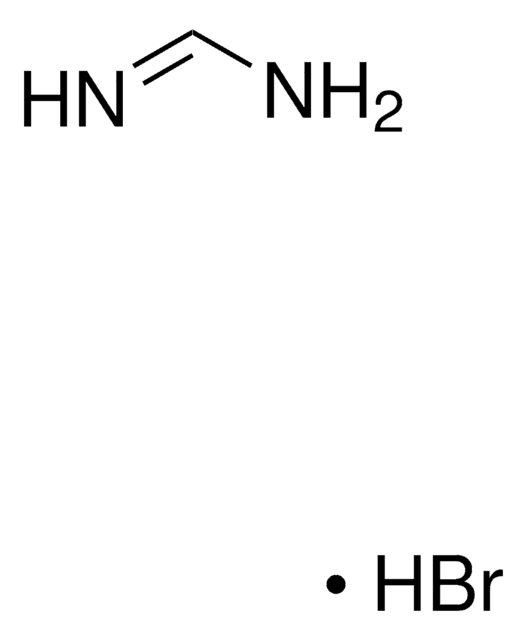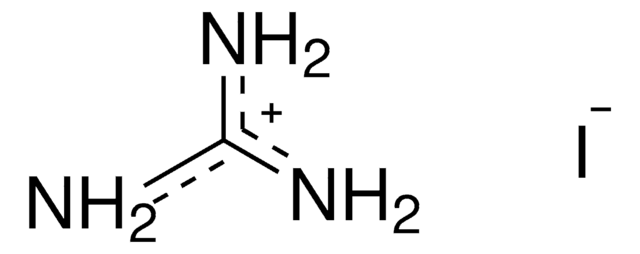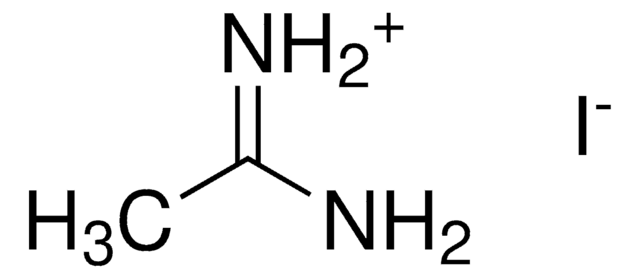806048
Formamidinium iodide
Sinonimo/i:
Greatcell Solar®, Iminomethylamine hydriodide, Methanimidamide iodide
About This Item
Prodotti consigliati
Descrizione
Elemental Analysis: C ~7.0%
Elemental Analysis: N ~16.3%
Livello qualitativo
Saggio
≥98% (H-NMR)
Stato
powder
Caratteristiche più verdi
Design for Energy Efficiency
Learn more about the Principles of Green Chemistry.
sustainability
Greener Alternative Product
Punto di fusione
335 °C
Categoria alternativa più verde
, Enabling
Stringa SMILE
[NH2+]=C([H])N.[I-]
InChI
1S/CH4N2.HI/c2-1-3;/h1H,(H3,2,3);1H
QHJPGANWSLEMTI-UHFFFAOYSA-N
Categorie correlate
Descrizione generale
Applicazioni
Note legali
Greatcell Solar® is a registered trademark of Greatcell Solar Materials Pty Ltd
Codice della classe di stoccaggio
11 - Combustible Solids
Classe di pericolosità dell'acqua (WGK)
WGK 3
Punto d’infiammabilità (°F)
Not applicable
Punto d’infiammabilità (°C)
Not applicable
Scegli una delle versioni più recenti:
Possiedi già questo prodotto?
I documenti relativi ai prodotti acquistati recentemente sono disponibili nell’Archivio dei documenti.
I clienti hanno visto anche
Articoli
Dr. Perini and Professor Correa-Baena discuss the latest research and effort to obtain higher performance and stability of perovskite materials.
Next generation solar cells have the potential to achieve conversion efficiencies beyond the Shockley-Queisser (S-Q) limit while also significantly lowering production costs.
For several decades, the need for an environmentally sustainable and commercially viable source of energy has driven extensive research aimed at achieving high efficiency power generation systems that can be manufactured at low cost.
Global Trade Item Number
| SKU | GTIN |
|---|---|
| 806048-25G | 4061832980409 |
| 806048-5G | 4061833333112 |
Il team dei nostri ricercatori vanta grande esperienza in tutte le aree della ricerca quali Life Science, scienza dei materiali, sintesi chimica, cromatografia, discipline analitiche, ecc..
Contatta l'Assistenza Tecnica.
